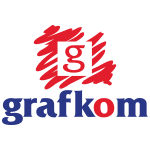-
Posts
904 -
Joined
-
Last visited
About James Ritson

Contact Methods
-
Website URL
http://www.jamesritson.co.uk
-
Twitter
JamesR_Affinity
Profile Information
-
Gender
Male
-
Member Title
Research Team (Development)
Recent Profile Visitors
22,497 profile views
-
 Lyndhurst reacted to a post in a topic:
Official Affinity Publisher (V2) Tutorials
Lyndhurst reacted to a post in a topic:
Official Affinity Publisher (V2) Tutorials
-
 sbgraphic reacted to a post in a topic:
Best Resampling Method
sbgraphic reacted to a post in a topic:
Best Resampling Method
-
@Frozen Death Knight Prior to 2.6, non-pixel layers couldn't be used with Merge Selected if they were the bottom (source) layer—I am aware that there was a front-end issue which made users believe they could (e.g. Merge Selected would be available with a group as the source layer, but wouldn't do anything). 2.6 then allowed Image and Develop layers to be at the bottom of a Merge Down/Selected operation, but it was in 2.6.1 that the front end logic was fixed up to correctly reflect what is possible/not possible (which is why Merge Selected is now greyed out if the source layer is a group, for example). From initial testing, it seems an easy accommodation to allow other layer types to be the source for a Merge Selected operation—such as a group, text layer, vector layer etc. Can't make any promises, but we'll look into it...
-
 Frozen Death Knight reacted to a post in a topic:
Feature regression - 2.6 no longer allows me to liquify multiple layers at once
Frozen Death Knight reacted to a post in a topic:
Feature regression - 2.6 no longer allows me to liquify multiple layers at once
-
 freelancerakash11 reacted to a post in a topic:
Official Affinity Designer (V2) Tutorials
freelancerakash11 reacted to a post in a topic:
Official Affinity Designer (V2) Tutorials
-
 freelancerakash11 reacted to a post in a topic:
Official Affinity Designer (V2) Tutorials
freelancerakash11 reacted to a post in a topic:
Official Affinity Designer (V2) Tutorials
-
 freelancerakash11 reacted to a post in a topic:
Official Affinity Designer (V2) Tutorials
freelancerakash11 reacted to a post in a topic:
Official Affinity Designer (V2) Tutorials
-
 freelancerakash11 reacted to a post in a topic:
Official Affinity Designer (V2) Tutorials
freelancerakash11 reacted to a post in a topic:
Official Affinity Designer (V2) Tutorials
-
 freelancerakash11 reacted to a post in a topic:
Official Affinity Designer (V2) Tutorials
freelancerakash11 reacted to a post in a topic:
Official Affinity Designer (V2) Tutorials
-
Hey @Ryps, I can't reproduce that here, Select Sampled Colour works as expected. Are you referring to the initial action of using Select Sampled Colour deleting the layer, or do you mean that it appears to be selecting all pixel content rather than some of it? As GarryP has said, would you be able to provide a screenshot or screen recording of what you're doing? PS with 2.6 you can now delete from Image/RAW layers with a pixel selection, no need to rasterise to a Pixel layer. It will mask by default, but if you wish to destructively remove areas you can change this in the Assistant Options (the little robot icon on the top toolbar). Look for the option "Delete selection from Image/RAW layer". Hope that helps.
-

Marquee Selection Issue
James Ritson replied to Wolf Wallis's topic in Affinity on Desktop Questions (macOS and Windows)
@Wolf Wallis I've tried the following in both 2.5.7 and 2.6: Make a selection with the Rectangular Marquee Tool Use Select>Feather and a large value to give the selection box rounded edges Select Refine, either from the context toolbar or via Select>Refine Edges In both versions, the red overlay disappears, which is an issue we can look at. I'm interested in why you've needed to roll back to 2.5.7, however, if the problem remains the same. Are you certain you're not trying different selection modifications? The other commands such as Grow/Shrink, Smooth and Outline all work fine when performing selection refinement afterwards. Similarly, if you just enter refinement (without using Select>Feather first), then the feathering feature in there works OK as well. I've attached a video which demonstrates me going through the same steps in both 2.5.7 and 2.6, using the same document with the same selection. As you'll see from the video, the behaviour (including the issue with using Select>Feather then refining) is consistent. I turned off Antialias on the context toolbar for 2.6 which is now enabled by default—whilst this can influence the selection slightly, I don't believe it would cause a problem that isn't also present in 2.5.7. If you were able to detail the exact steps you're taking in 2.5.7 that don't work in 2.6, that would be really useful for us to be able to reproduce what's happening. Screen Recording 2025-02-26 at 08.26.53.mp4 -

What's wrong with 2.6.0?
James Ritson replied to Guedes's topic in Feedback for the Affinity V2 Suite of Products
This is incorrect speculation. -
Hey @nickbatz, sounds like you want Lock Children. With the Move Tool active and your "bg sky" layer selected, look on the context toolbar. On the far right you should see a checkbox called "Lock Children". This will lock the child mask layer in place whilst you transform the parent layer. Whilst transforming, you can also hold the Space bar down to invert whichever behaviour you've chosen. Here's a tutorial on the process: Hope that helps!
-
@Frozen Death Knight apologies, this was due to all the logic changing to accommodate rasterisation of Image/RAW layers when entering Liquify/Develop/Tone Mapping. This will be changed to restore the original behaviour, so you'll be able to liquify multiple Pixel and Mask layers (but Image and RAW layers will still require a single selection).
-
Hey @Mordy, Photo does actually have quite a few of those already: 2.6 will ship with machine learning functionality including the Object Selection tool and Select Subject command—whilst they don't address the three requests listed here directly, they are a step in that direction. The tools are available to try in the public beta now. Photo already has these in one form or another: placing .afphoto (or .afdesign/.afpub) files into an existing document will import them as embedded documents, which can also be linked externally if required. The contents of these documents can be edited at any time, and non-destructive filters such as a live perspective transform can be applied to manipulate them in the parent document. Filters can be applied non-destructively by taking advantage of Live Filters. These are similar to adjustment layers in that you can place them anywhere in the layer stack to control how they render, change their blending options, mask them etc. No need to merge your layer work so far into a single layer that you then apply smart filters to. As far as advanced layer modes for compositing, Photo has blend ranges which let you blend based on source layer and underlying layer tonal range. You can also modify blend gamma and control antialiasing (e.g. for text/other vector elements). File>New Batch Job lets you apply macros to multiple files at once, so you can build up some decent batch processing workflows this way, although there is room for improvement with this feature. Multi-file conversion can be achieved via Batch Job, or you can use the Export Persona to export either the whole document or specific layers to multiple formats simultaneously, including different scaling/resolution options as well. As far as workspace customisation, do you have any examples? You can save panel layouts under Window>Studio and switch between them, and you can customise your tool selection and top toolbar options. Thanks, James
-

Cmd+Return shortcut broken (regression)
James Ritson replied to MikeTO's topic in Other New Bugs and Issues in the Betas
Hi @MikeTO, thanks for the information, in the newest build (3106) I believe I've fixed it so you can now use CMD+[Additional modifier/s]+Return. If you could confirm this is working for you, I'd appreciate it! -
It should be straightforward , assuming that the user has opened a multi-channel EXR. I suspect it's only because you're starting with a non-multi-channel document, so the layer naming convention needs to be adopted in this case. The documentation could probably be expanded upon which would be helpful to clarify this further, I think...
-
Hey @MmmMaarten, it might be worth having a look at the help topic on OpenEXR: https://affinity.help/photo2/English.lproj/pages/HDR/openexr.html Specifically this part: When you import a multi-channel EXR, the layer naming convention is all set up for you on import, e.g. you have LayerName.RGB, LayerName.A etc. If you've enabled alpha association on import, you'll typically get LayerName.RGBA. You might have other data type extensions as well, e.g. a Normal pass could import as Normal.[X][Y][Z] However, because you've imported a standard single channel EXR, the layers just come in as RGB and A (or RGBA if you've enabled alpha association). In order for the multi-channel export to work correctly, you'll have to rename your layers, e.g.: (Or use whatever layer name you like, e.g. MainLayer.RGB, MainLayer.A). Then you should find your export works correctly. Hope that helps!
-
That will be the current Convert to Curves binding (presumably you're using 2.5), which selects the Node Tool after performing the command. In 2.6, CMD+Return / Ctrl+Return whilst in text input mode will commit input and switch to the Move Tool. You have to be in actual text input mode, however—otherwise it will use whatever the binding is set to.
-
You've got Pattern Layers which should fulfil this requirement I think. Any image can be turned into a repeating pattern by using Layer>New Pattern Layer from Selection. What you can then do is select the Move Tool (V) and scale the layer down—it will repeat infinitely across the bounds of the document. You can retouch the layer (to remove seams etc) and it will preview across all tile repetitions. When you're ready to export, just scale the layer back up to its full resolution. It's worth noting that even if you scale a pattern layer down from its original size (to see the tiling), you can use tools like the Clone Brush/Inpainting Brush etc and it will operate on the original resolution pixel data—so you're not compromising quality/resolution by scaling down unless you explicitly rasterise (Layer>Rasterise) the data while it's at a smaller scale. Hope that helps!
-

Smart object workflow
James Ritson replied to aaabbbccc's topic in Affinity on Desktop Questions (macOS and Windows)
Non-destructive RAW is available: when developing a RAW file, change the output dropdown (top left) from Pixel to RAW Layer embedded or linked (embedded is preferable, unless you will always have the original RAW file to hand so Photo can access it). This lets you re-enter development at any time with that layer to change the development settings. Tutorial here: Hope that helps!











